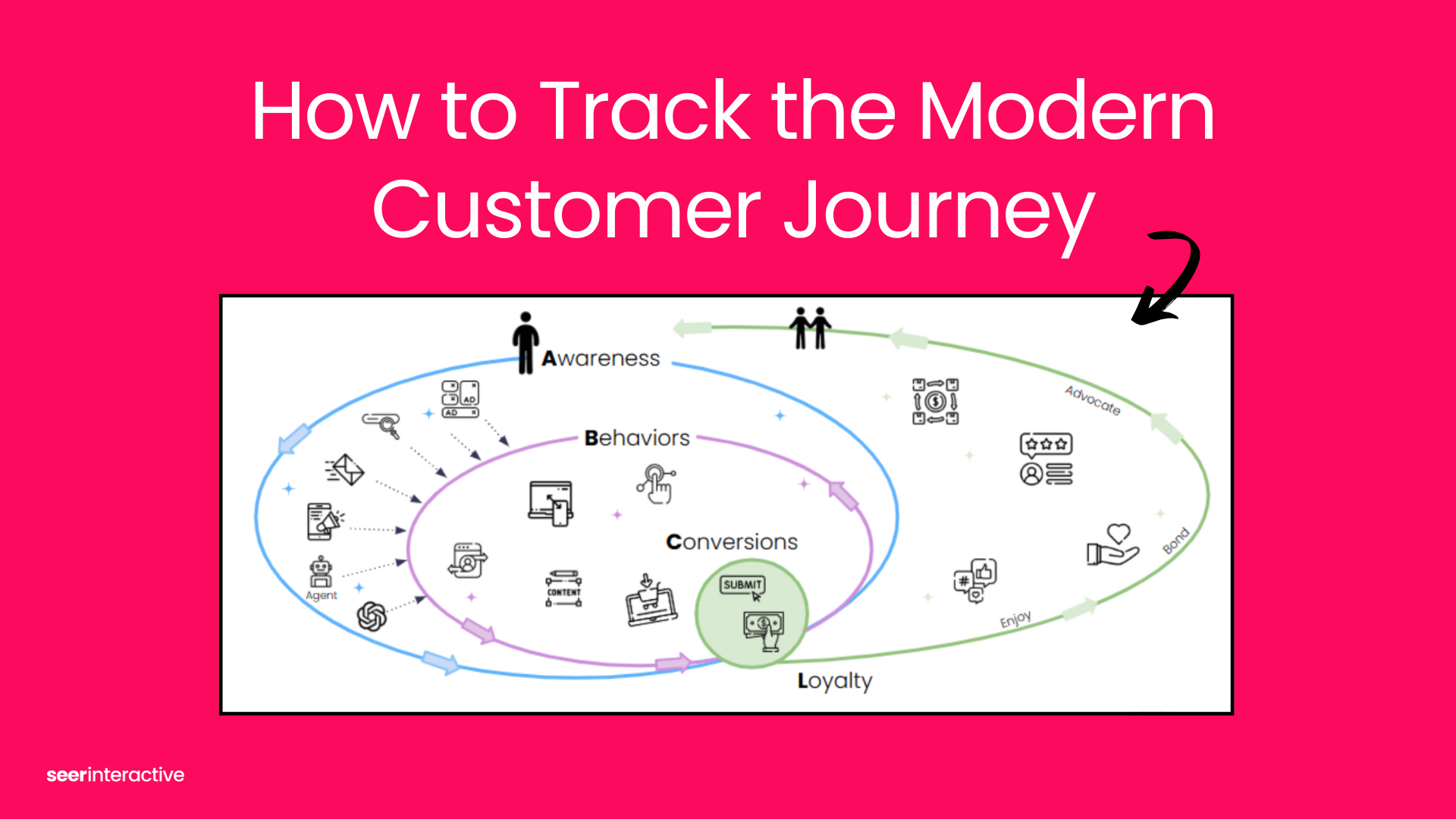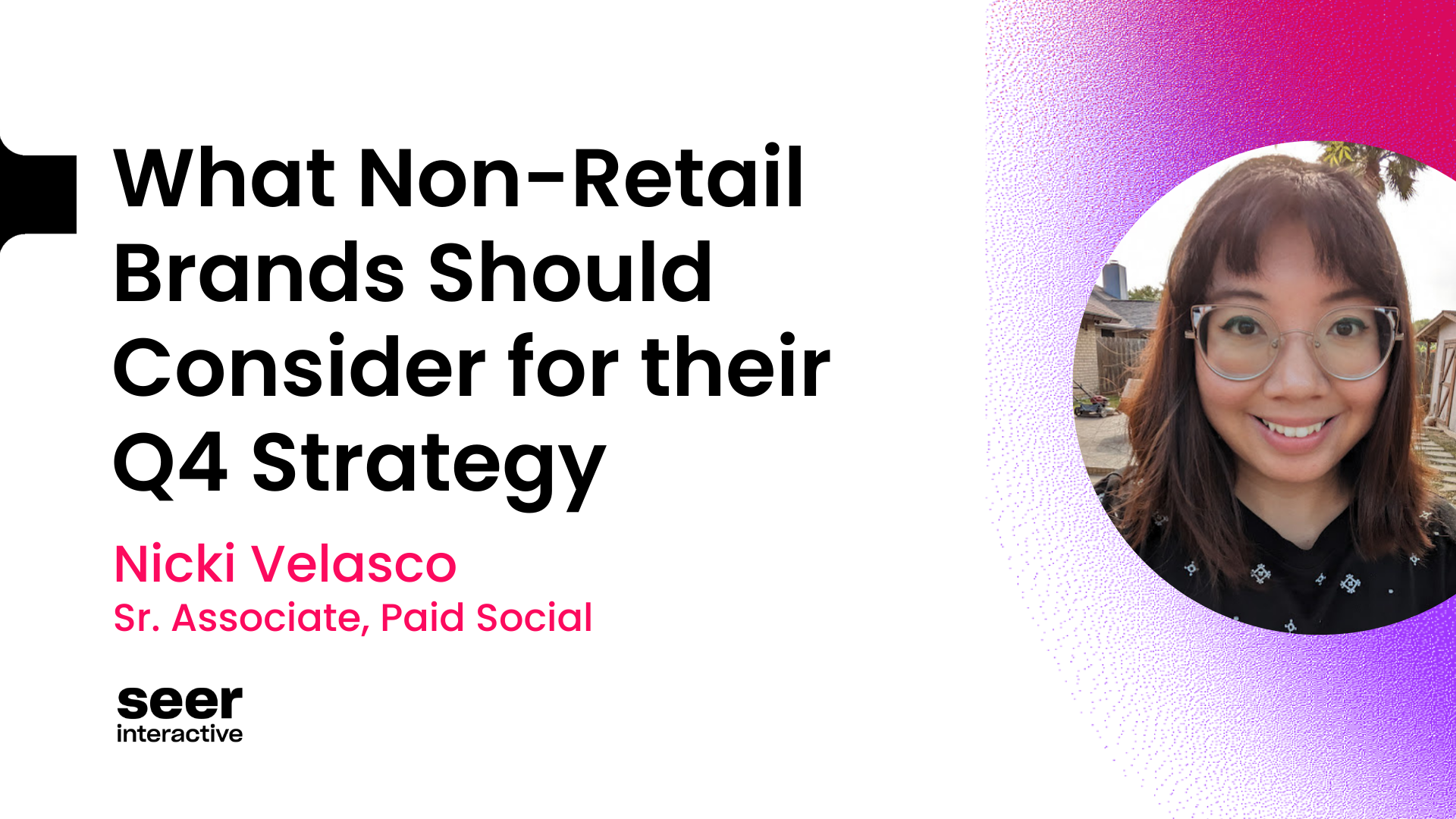The digital marketing landscape changes every day. We are always striving to stay ahead of the curve and harness the power of advancing technology. However, amidst the excitement of innovative strategies and cutting-edge tools, there lies a common pitfall that many digital marketers unknowingly stumble into.
We are going to share our hot take on areas that we feel digital marketers are missing the mark, whether it be those that are newer to the industry or even seasoned marketers that also veer of course from time to time. These are also traps or misconceptions that we probably all have fallen victim to before.
Let’s unpack where things go wrong and how we can correct our mindset.
Key Performance Indicators
We always see clients or marketers think all metrics are the same in terms of importance or the idea that you come up with one goal that rules them all. Sometimes I see fellow marketers get goals from their clients and just take it and run instead of asking the right questions to understand where they are coming from and how our piece fits into the larger business goal. Here are some no-nos we will want to avoid:
- Lack of clear goals: If you don’t have any insight into what you hope to achieve by your marketing efforts, you can’t make adjustments along the way. You won’t have any clear directions. You also want your goals for paid media to be connected to your overall business goals. This ensures that paid efforts are directly contributing to your overall goals and allows for more measurable ROI.
- Unrealistic goals: If you set goals that you cannot achieve, then you will do just that. This will lead to frustration and ineffective planning. Goals have to be achievable so we can measure our progress, and they will be sustainable long-term.
- Focusing on vanity metrics: These are metrics like traffic or social media engagements. They tend to be thin and don’t normally align to deeper business objectives. Unless your primary goal is just to drive mass volumes of traffic, these metrics do not help inform strategy.
- One goal for everything: Each stage of the funnel—awareness, consideration, and conversion—represents a unique opportunity to engage with potential customers. Therefore, setting separate goals for campaigns targeting different funnel stages is essential. If your campaigns have different objectives and even CTAs, then your goals should too.
So how do we fix it?
Develop goals that align with customer intent, have measurable progress and results, are achievable, and contribute to improving return on investment.
[TIP] Use a combination of historical data and benchmarks to help create realistic goals
All Conversions Are Good
We always see marketers think that the only way to show value is to see an increase in conversions and a decrease in cost per conversion. Performance Max campaigns can generate a large amount of really low-cost conversions, but it is important to consider if these are meaningful. Are these leads turning into MQLs? SQLs? Sales? Are they high-quality leads? Are they high-quality conversions? Not all conversions are created equal. If you track multiple conversion actions, you could have conversions that are high-volume drivers (like clicks to call) but maybe are not as valuable to your business. It is always a good idea to see how what impact your efforts have on your business’s bottom line. Higher quality leads can be more expensive from the jump but lead to more revenue.
[TIP] Consider using secondary conversions to help you stay informed on the amount being driven by campaigns but not be counted in any report that tracks ROAS against your goals or used in automated bid strategies that optimize for conversions.
To ensure that the results you are after are achieved, it is very important to set expectations for what data is needed to ultimately get to your true north. That way you can align upfront and avoid conversations later that you haven’t been optimizing to what is a success metric. All marketing efforts should still ladder up to the main goal of the media you are running.
Not Using First-Party Data Effectively
With all the talk about the removal of 3rd party cookies, 1st party data has become more important than ever. Not only does it help you build inclusion and exclusion lists, but it helps smart engines understand the types of customers you are going after. Many platforms can create audiences that are similar to the customer lists we provide to the platform. Since first-party data is directly collected from your audience, it provides insights into their behavior, preferences, and demographics. This data allows for more precise targeting, ensuring your ads reach the most relevant audience segments.
Targeting based on first-party data tends to be more cost-effective than broad targeting or relying on third-party data. You can focus your budget on reaching audiences that are more likely to convert, maximizing your ROI. It also can allow you to better personalize your ads to be more relevant to your audience.
Using first-party data means you own and control the data, reducing reliance on third-party sources. This can help you comply with privacy regulations like GDPR and CCPA, as you have a direct relationship with the data subjects.
On the opposite end, you should also leverage your 1st party lists as exclusions where applicable. If repeat customers do not apply to your business, we recommend excluding these people from your marketing campaigns.
[TIP] Once you consider your goals and user intent, you can segment your lists to align. This also includes making sure you check the list size to ensure it is the correct size to deploy in ad platforms.
Not Prioritizing Creative
Creative needs to be a top priority, particularly in developing video creative. Video content is only going to continue to grow across all platforms. We can already see User Generated Content (UGC) take off in social channels with TikTok, Meta/Instagram Reels, and Snapchat, but we are also seeing Youtube lean into it with Youtube Shorts. Videos can be used to generate engagement, brand awareness, and even leads/sales.
If getting creative is a challenge, use AI tools to your advantage!
To better prioritize creative, align your creative to the stage of the funnel. If the goal is to get users familiar with your brand, then consider how you want to tell the story and capture your audience’s attention. If you are using your video in a remarketing campaign, consider how you would speak to someone that is already familiar with your brand or product.
[TIP] Make sure you develop your content that is engaging and geared towards the platform it will be delivered on. Also make sure to create a variety of assets to avoid fatigue and overuse of the same content across all channels.
Poor Audience Insights
A company with an internal marketing team may have done their due diligence to develop buyer personas over the last five years - they are certain they know their target audience and share that with you. However, when you review the audience targets and the demographic information you have, you see many contradictions. That’s okay! Digital marketing is a dynamic industry with shifts in both buyers and processes. It may be time to reassess the audience targets.
You can do this with current platform insights on who you are reaching and who is converting, who your competitors are targeting, what affinities these folks have, etc. It is your job as an extension of their marketing team to call out these contradictions and any audience demos you think they would benefit from. If they have never created buyer personas, that is something you can help inform for them. This is not their ideal customer, but traits of various types of people who may be interested in their services or products.
At the very least, you should be asking these questions of your audience:
- What are their main demographic characteristics?
- Where are they on the web?
- What social media platforms do they frequent?
- What are the pain points in their shopping journey?
- Where do they get their information from in order to convert?
A lot of these questions are sometimes best answered while leveraging SEO. Which brings us to the last item that digital marketers can get wrong.
Ignoring SEO
This point can take a couple of forms: first, you could be ignoring an SEO best practice that could in turn be making your paid efforts less effective or you could be missing valuable insights by ignoring SEO reporting.
Let’s start with ignoring SEO best practices…
In this scenario, let’s say you are the client paying an agency to manage your paid shopping feeds. You have a feed you have supplied for the agency to leverage for your media, however, this feed is the same feed you use for paid shopping, marketplaces, and organic listings. Your team hasn’t been keeping up on the feed, so you have some odd characters getting into your paid feed, causing your ads to become flagged and disapproved, or worse yet they are serving but showing some less-than-ideal descriptions. This is confusing to the user when viewed on the SERP and you just lost a new customer and a sale because of it.
Even short of a separate feed for each channel, you need to ensure SEO best practices are being upheld for a smooth customer experience across channels.
Taking this a step further, pairing your paid data with SEO can create a symbiotic relationship that will only benefit your business. For example, leveraging the terms your client is ranking for in SEO can help you shave excess paid search spend on terms that are already ranking high in organic search. This is something Seer has been using for years and the cost-savings can be great, especially in times of budget cuts.
In the day-to-day, knowing what sites your audience is visiting for the key terms for your business can also help guide your paid media strategy. It could be realizing a new competitive threat or a potential social media strategy that was not apparent- did you know the People also ask (PAA) box can be very telling on what users are really looking to find. It is worth reviewing organic results directly in the SERP when you don’t have the SEO chops yourself, that alone can be insightful. And would it be fair to your client if you chose to ignore their site’s poor meta descriptions or lack of a strong homepage headline as you send paid traffic to this poorly optimized site?
We all know that the digital marketing world can change overnight, which means we all have to be nimble and flexible to address these challenges. Don’t fall victim to any of these errors, but instead, create a proactive approach to avoid them.
By setting clear and achievable goals, prioritizing high-quality conversions over volume, leveraging first-party data effectively, prioritizing creative excellence, understanding audience insights, and integrating SEO best practices, marketers can optimize their strategies for success. Embracing these challenges and continually refining strategies based on data and insights will ensure that digital marketing efforts remain effective and impactful in the dynamic digital landscape of 2024 and beyond.


